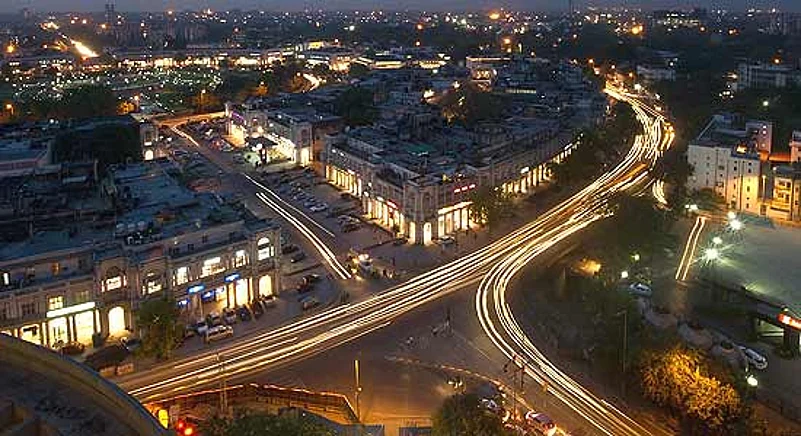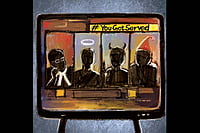Books on Delhi clearly suffer in comparison with those that embrace Mumbai, such as Maximum City or Shantaram. Only Dalrymple’s City of Djinns, written with an obvious fondness for the city’s monuments but an irreverent disdain for its inhabitants, and Sam Miller’s Megacity, with its idiosyncratic approach, come to mind. Neither, though, seeks to be representative of a city, not in the sense Rana Dasgupta’s Capital claims to be ‘A Portrait of Twenty-First Century Delhi’.
The play on the word ‘capital’ in the title makes it clear that the writer’s ambitions exceed this rather ambitious task: “But the book I began to write was only in part about Delhi. It was just as much a book about the global system itself”. To achieve this aim, Rana’s book combines reportage with, for a lack of a better set of words, sociological musing.
The character of these musings can only be reproduced rather than rephrased. Spelling out a central concern of the book, Rana writes, “The ‘Punjabi culture’ which Partition refugees brought to Delhi is often satirised for its preoccupation with money, property and outward display. But this is as much a ‘post-traumatic’ culture as Punjabi culture. It is the diametric opposite, in fact, of the Sufi outlook that so influenced the culture of this part of the world.... The population somehow resembled one of those trauma patients who adopts a personality opposite to their own so as not to be susceptible to the same hurt again.”
Grounded neither in history nor his own reportage, such observations form a central frame for Rana’s arguments. But the idea of Punjabis as an inward-looking people whose personality was predominantly influenced by the verses of Sultan Bahu or Bulle Shah before Partition is as much a caricature as the stereotype Rana hopes to dispel. Constraints on conspicuous consumption and aggression imposed by late 19th century reform movements, such as the Arya Samaj and the Singh Sabha, did influence many Punjabis, but these movements struggled with the same Punjabi impulses that Rana thinks are a post-Partition phenomenon.
Rana quotes a saying which is often used to locate such impulses in the history of Punjab. Of course, he gets the saying wrong—Jo khada pitta apnaa, baki shahi daa (he translates this inaccurately as “what is in your stomach is yours; the rest belongs to the invader”). The actual, more rhyming saying goes, khadda peeta lahe da, baki ahmed shahe da (what we eat and drink is ours, the rest is [the Afghan invader] Ahmed Shah’s).
Ignorance, then, may largely be responsible for the absurdity of many such claims that belong to the realm of pop sociology. Rana writes, “Fleeing to Delhi from Islam, these families were very conscious of making their new lives on Muslim land.... The new colonies in which they settled in the 1950s were reclaimed from ancient Muslim graveyards...and Islamic ghosts drifted into their nightmares”. Again, these new colonies were mostly settled on land taken from Jat villages. And the Jats, who were by no means traumatised by Partition and, if anything, were the source of considerable trauma, exercise the same unbridled masculinity for much of their history that Rana makes so much of in writing about post-Partition Delhi.
Such generalisation can venture into dangerous territory. “The Sikh male identity—which included the wearing of a beard, the carrying of the sword...thus brought him naturally into conflict with the Indian state and, ultimately, to the assassination of its female leader.... It should be evident that, for both sides, this crisis of 1984 had everything to do with the unfinished business of Partition, which had done so much to call into question the masculine credentials of both siblings, Hinduism and Sikhism.... Hindus who had mulled for decades in the ignominy of their flight from West Punjab found themselves taking...revenge on their one-time fellow refugees”.
Note the words ‘naturally’ and ‘ultimately’, imposed on the presumption of a homogeneous Sikh or Hindu identity. It is as if this Sikh-Hindu conflict was preordained and the fact of Partition was enough to ensure Indira Gandhi’s killing. Such essentialism is erroneous and unforgiveable, especially when you note that most killings of Sikhs didn’t involve Hindu refugees from West Punjab.
This, then, seems to be a book edited in the West for the West and tossed to us as an aside. It may explain why the text, while quoting Khushwant Singh, refers to him as “the son of one of the building contractors (who constructed Delhi)”, without mentioning him by name.
In this context, Malvika Singh’s Perpetual City is a useful addendum. Inadvertently, it is more revelatory about how power operates in Delhi than Rana Dasgupta’s thick tome. The daughter of Raj and Romesh Thapar, Malvika grew up in a house which was at the centre of one of the capital’s vibrant but restricted intellectual circles.
From her vantage-point, the turmoil of a nation sounds like the goings-on of an exclusive club. Even the trauma of Emergency is lessened somewhat when you hear that Piloo Mody, “a large, overweight man and a gourmand with a sharp intellect and great sense of humour” was, after his arrest in 1975, “horrified to discover, when he arrived in jail, that there was no Western-style potty. He sent a message to Indira Gandhi saying so, and the same evening she ordered a brick platform to be constructed around the squat-type, for his comfort”. Marked by the first-comer’s advantage, it is easy for her to say that “New Delhi was once a gracious town. A quiet elegance was its hallmark. An austere sensibility dictated the dress sense of men and women who knew instinctively what was right and what was over the top”.
In this club, the Nehru-Gandhis have served as paragons, despite the occasional deviation from their high standards. Indira Gandhi “exuded power because of how she ruled and connected with her people”, but by her second term “began to be isolated from dissenting views”. Malvika wonders if the Bofors scandal was “a deliberate ploy...to try and discredit a clean, intelligent, honest politician”. And, of course, Sonia Gandhi is one of India’s “astute and dignified leaders”.
Perhaps unwittingly, in its quiet assumption of privilege, this account, more than anything I have read recently, is the best explanation for the mobs from across the country that have been knocking down the trappings of this once ‘gracious town’. That is, seeing hope in a man that a resident of a privileged bungalow of this city dismissed as a chaiwallah.
























